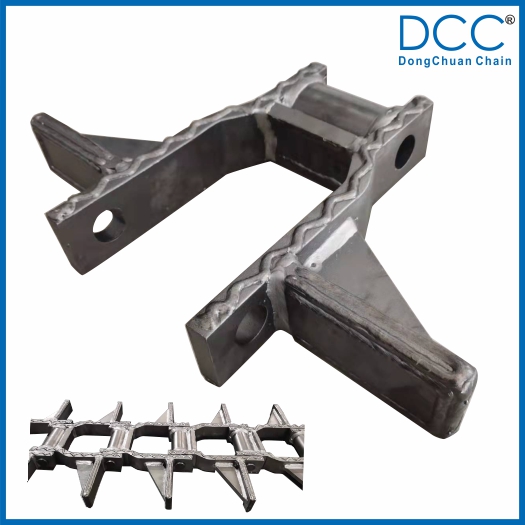- ADD:Hongzhuang Road, East Town Industry Area, Yaoguan Town, Wujin District, Changzhou City, Jiangsu Province, PR. China

- Mobile Phone:+86-15961181358
- Fax:+86-519-88700526
- E-mail:wk1358@dongchuan.cn
What is welded chain?
Have already visited 48607/10/2024I. Definition of Welded Chains
II. Main Features of Welded Chains
High Strength: Due to the welded connections between the links, welded chains have very high tensile strength.
Good Wear Resistance: The metal material and welding process provide excellent wear resistance.
Corrosion Resistance: Depending on the material, welded chains have good corrosion resistance, suitable for harsh environments.
Compact Structure: There are no gaps between the links of the welded chain, making the structure more compact.
III. Manufacturing Process of Welded Chains
Material Selection: Choose suitable metal materials, such as carbon steel, stainless steel, or alloy steel.
Link Formation: Form the preliminary shape of the links through stamping, forging, and other processes.
Welding Process: Use automated welding equipment to weld the links together, ensuring a solid connection.
Heat Treatment: Conduct necessary heat treatment processes to improve the mechanical properties of the material.
Surface Treatment: Apply surface treatments such as galvanizing, nickel plating, or spraying as needed to enhance the chain's corrosion resistance and aesthetics.
IV. Application Fields of Welded Chains
Lifting Industry: Used in slings for lifting and moving heavy objects.
Mining and Construction: Used as traction chains in conveyor belts, excavators, and other equipment.
Logistics Industry: Used for bundling and securing cargo.
Manufacturing: Used as transmission or conveyor chains in production lines.
V. Maintenance and Care of Welded Chains
Regular Inspection: Regularly inspect the chains to ensure there are no injuries or defects.
Cleaning: Keep the chains clean to prevent wear from contaminants.
Lubrication: Lubricate the chains regularly to reduce wear and extend service life.
Avoid Overloading: Comply with the carrying capacity limits of the chains to avoid overloading.








View More(Total0)Comment Lists